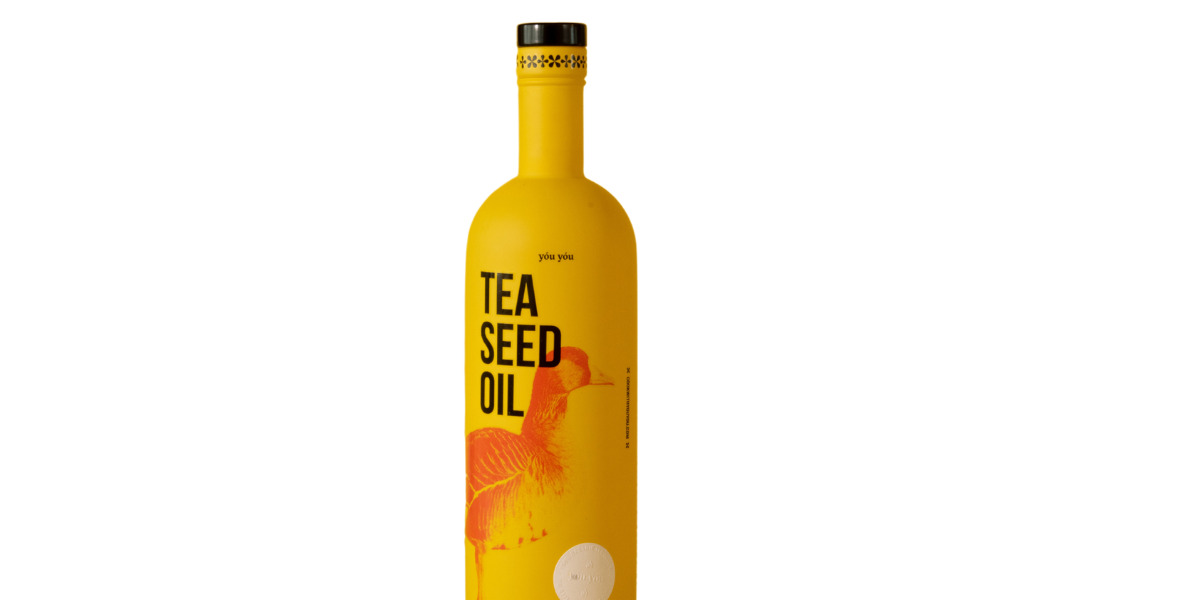Those who know me will know by now that I absolutely love exploring the science and nuance behind novel food products so when tea seed oil producer Yóu Yóu offered me an opportunity for an evidence-based collaboration, I simply could not refuse.
I can tell you that the topic of cooking and dressing oils comes up regularly with my clients, so I know that this particular article is something that you guys will be very interested in reading.
I’ll be the first to admit that, before writing today’s blog post, I’d actually never even heard of tea seed oil before.
Forgive my ignorance for those who may already use it, but to set the record straight tea seed oil is produced by cold pressing the seeds of a breed of tree that is native to east Asia, the Camellia.
Yóu Yóu brand tea seed oil is produced specifically in the Hunan province of China where it is organically grown.
In today’s article I will go through the physiological and culinary aspects of this novel product which help define it as something truly unique on the oil market.
Let’s get right to it.
Feature #1 – High Monounsaturated Fat (Oleic Acid) Content
According to studies of dietary fat composition, tea seed oil contains only slightly less oleic acid than is famous counterpart olive oil ( ~55% vs 60-80% of total content).
Oleic acid is part of a family of monounsaturated fatty acids which are known to be especially heart healthy, owing largely to their capability to reduce blood cholesterol levels.
Case in point, a 2020 study out of the European Journal Of Lipids Science found that tea seed oil and olive oil reduced cholesterol levels by similar amounts in adult human subjects.
Feature #2 – Unique Antioxidant Compounds
Above and beyond its healthy fat content, tea seed oil is also uniquely rich in the potent flavonoid class of antioxidants known as catechins.
Catechins have also demonstrated potent anti-inflammatory potential in the laboratory setting.
These compounds are found primarily in various types of tea, but one of the novel health benefits of using tea seed oil is that it also contains them.
Pretty cool right?
Feature #3 – Very High Smoke Point
While tea seed oil may have slightly less oleic acid than olive oil, it has a significantly higher smoke point.
The smoke point of an oil determines its suitability for cooking at very high heat, which is a feature of certain types of global cultural cuisines.
Where most types of olive oil fall in and around 400° F, tea seed oil’s smoke point sits at a resounding 486°F, placing it among the most heat-resistant oils on the market.
Feature #4 – Subtle Taste
Tea seed oil brings a number of unique health and culinary benefits to the table that are ultimately complimented by its light unassuming taste which will not interfere with the flavour profile of the dishes you use it to create.
This is particularly useful for culinary works that utilize multiple ingredients and delicate flavours – a note to all my foodie followers out there!
Yóu Yóu demonstrates a few such dishes via the recipe blog section of their website which I encourage you check out because they all look great.
Final Thoughts
If you are a cooking oil connoisseur looking for that perfect combination of unique nutritional value, high smoke point and extensive culinary utility, tea seed oil may be just the product you’ve been waiting for.
I encourage to take a closer look via Yóu Yóu’s website and once again thank the company for nudging me in the direction of this truly novel product.
Until next time,
Andy De Santis RD MPH



